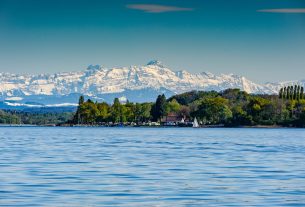A tour option for those in the mid-west of Germany is the Grand Duchy of Luxembourg. Its capital, Luxembourg City, is just 35 km from the border with Germany.
With a population of 600,000 inhabitants, equivalent to the city of Stuttgart, Luxembourg is one of the smallest countries in Europe and the only grand duchy in the world today. Its small territory, however, holds beautiful forests, castles and a rich and charming capital.

In contrast to its discreet dimensions, Luxembourg has the highest GDP per capita in the world (IMF data in 2020). This is reflected in some characteristics that we can observe during a guided tour of its capital, such as clean streets, safe and efficient transport, and a calm and organized city. Many foreign investors choose to open a headquarters or headquarters in Luxembourg, as the country offers several tax incentives.

Its strategic position has ensured that it has been one of the largest fortresses in Europe since the 15th century, where it was called the “Gibraltar of the North” due to its impenetrability. However, in 1866, France and Prussia exchanged sparks and almost declared war for possession of the fortress of Luxembourg, where they ended up signing the Treaty of London of 1867, which demanded the dismantling of the fortress and that Luxembourg be placed in perpetual neutrality, leading to the end of use as a military site by the country. It is currently possible to visit what remains of the fortresses, which together with the city's old quarter were listed as a UNESCO World Heritage Site.

One of the curiosities of Luxembourg is that a quarter of its population speaks Portuguese, in addition to German, French (official languages), English and of course, Luxembourgish, which has influences from neighboring countries (France, Germany, and Belgium). Since 2010, the Luxembourgish It is considered a vulnerable language, that is, it has a high risk of disappearing in the coming decades. To get around this, the local government adopted measures to preserve and make the language one of the official languages of the European Union. It is common to observe exchanges of dialogue in more than one language, in which one person asks in German and another responds in Luxembourgish, for example.



A point of Luxembourg fortress that the traveler cannot miss are the Bock casemates. Casemates are fortifications intended for military defense, and in this specific case they also had the advantage of being on rocky cliffs above the Alzette River. These fortifications began to be built in 963, by Count Siegfried, next to his castle, the Lucilinburhucfrom where the city of Luxembourg developed.

Luxembourg's relief is truly incredible, allowing us to admire landscapes like we don't see anywhere else, with plateaus, and a valley in the middle of the citythe traveler can take a tour and discover the Constitution Squarefrom which you will have an impressive panoramic view.

In addition to this, there are several interesting points in the city, such as the museum that tells the history of the country (Luxembourg City Museum), which in the past was a strong producer of gloves throughout Europe. In addition, on our guided tour in Luxembourg, you will discover various curiosities, such as preserved ancient medieval clothing.





